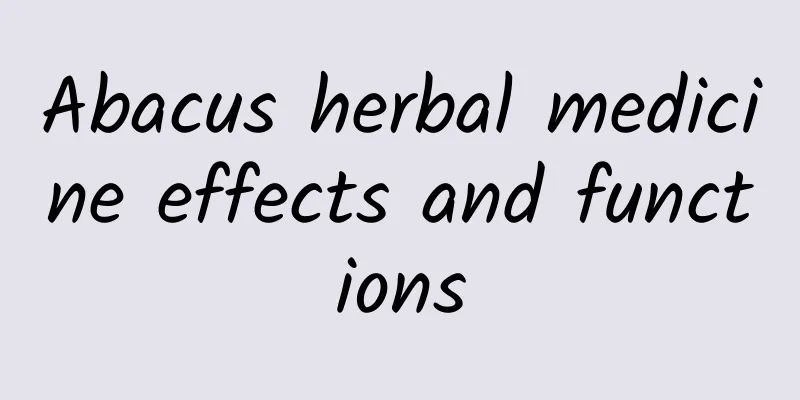What are the most powerful anti-tuberculosis Chinese medicines?

|
Tuberculosis is a disease that is difficult to cure completely, especially pulmonary tuberculosis, which not only easily deprives the patient of his life but is also contagious. But from another perspective, no one wants to get sick, so if you have already contracted tuberculosis, you must find ways to actively treat it. You must pay attention to the hygiene of your living environment, get more rest, and then take medication for treatment. So what is the most powerful anti-tuberculosis Chinese medicine? Advances in tuberculosis treatment Before the 1930s: The treatment of tuberculosis mainly adopted a hygienic nutritional therapy that included rest, breathing more fresh air, and increasing nutrition to improve resistance. However, due to the lack of effective anti-tuberculosis drugs at the time, its treatment was greatly limited, with a cure rate of only 25% and the mortality rate ranking first among all diseases. 1930s to 1950s: Based on the above-mentioned nutritional therapy, physical methods were used to compress lung tissue (pulmonary cavitation) to promote lesion healing, and the cure rate increased to about 40%. After the 1950s: With the emergence of a large number of anti-tuberculosis drugs such as streptomycin, isoniazid, and rifampicin, unprecedented therapeutic effects have been achieved. The cure rate once reached 90% or even 100%. However, in recent years, due to the development of multidrug-resistant Mycobacterium tuberculosis and irregular treatment and other reasons, the tuberculosis epidemic has rebounded and expanded, and it has once again become a serious infectious disease that endangers human health. Classification of anti-tuberculosis drugs Anti-tuberculosis drugs are divided into two categories according to their frequency of use and effectiveness, namely first-line anti-tuberculosis drugs and second-line anti-tuberculosis drugs. First-line anti-tuberculosis drugs: isoniazid, rifampicin, ethambutol, pyrazinamide, and streptomycin. Features: good efficacy, low toxicity; Main applications: can effectively treat most tuberculosis patients. Second-line anti-tuberculosis drugs: Drugs: para-aminosalicylic acid, ethionamide, capreomycin, rifadin, etc. Characteristics: either poor efficacy or high toxicity; Application: used for patients who are resistant to or cannot tolerate first-line anti-tuberculosis drugs. First-line anti-TB drugs: Isoniazid Isoniazid (INH, isoniazid, also known as rimifon) Features: High efficiency, low toxicity, convenient, cheap, only effective against tuberculosis bacteria; Antimicrobial Mechanism: Inhibits the synthesis of tuberculosis bacillus DNA and cell wall, and inhibits the synthesis of mycolic acid (mycolic acid is an important component unique to the cell wall of tuberculosis bacillus, and its reduction will cause the bacteria to lose acid resistance, hydrophobicity and proliferation ability and die); In vivo process - Easily absorbed by oral administration or injection; - Strong tissue penetration and wide distribution (effective against both intracellular and extracellular tuberculosis bacteria, can penetrate into caseous tissue and cavities, and has high concentrations in cerebrospinal fluid, ascites, and pleural effusion); - Ineffectiveness through acetylation: fast metabolizer/slow metabolizer. Usual dose: Adults: 300 mg per day (or 4-8 mg/kg per day), orally once; children: 5-10 mg/kg per day (not more than 300 mg per day). Clinical Application For all types of tuberculosis, except for early mild pulmonary tuberculosis or preventive use, it is advisable to use it in combination with other first-line drugs. When used alone, Mycobacterium tuberculosis is prone to develop drug resistance (the sputum bacteria resistance rate can reach 70% after 3 months of single use). If used in combination with other anti-tuberculosis drugs, the occurrence of drug resistance can be delayed. This drug can kill the actively growing and metabolic tuberculosis bacteria inside and outside the cells and the almost dormant ones. It is a full-effect bactericidal agent. Adverse Reactions - Adverse reactions rarely occur at conventional doses of this drug, but peripheral neuritis (related to Vit B6 deficiency) and central nervous system poisoning (excitation or inhibition) may occasionally occur when the dose is increased. - Liver damage (elevated serum alanine aminotransferase): more common in the elderly, slow metabolizers, and alcoholics. - Others: allergic reactions, gastrointestinal reactions. |
<<: How to restore a person’s energy and spirit? Seven methods that are absolutely reliable
>>: What are the methods for repairing fall scars?
Recommend
Chinese medicine enema for hydrosalpinx
Hydrosalpinx is a common disease of the fallopian...
Is digestive tract perforation serious?
Gastrointestinal perforation is a relatively seri...
Is pericarditis serious?
Pericarditis is a relatively serious disease. It ...
Age of onset of mental illness
Mental illness is a mental illness that is diffic...
Why don't you sweat?
Sweating in hot weather is a normal phenomenon. T...
Ingredients of 84 disinfectant
84 disinfectant is a common disinfectant in daily...
What foods are worth eating to nourish and protect the liver!
The liver is the organ of digestion and detoxific...
What is the difference between breast nodules and fibroids?
Breast nodules and breast fibroadenomas are inclu...
What are the benefits of soaking sea buckthorn root in wine?
Seabuckthorn can be said to be a treasure. Whethe...
How many weeks in late pregnancy does fetal movement decrease?
Fetal movement is a normal physiological phenomen...
If you have stomachache and diarrhea when you wake up in the morning, beware of cancer
I believe that many people have the habit of want...
What are the signs of worsening hand, foot and mouth disease?
Hand, foot and mouth disease is a common disease ...
What is the medicinal value of red ginseng?
People with weak bodies can eat more red ginseng,...
Purpose of ECG monitoring
You must have often seen on TV that next to the b...
What fruits can men eat to nourish their kidneys and replenish their sperm?
Fruit is indispensable in our daily diet. General...









